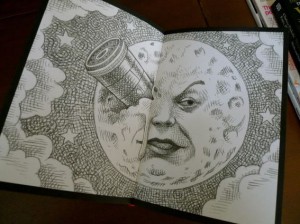About the Interviewed: Charly Cohen is a student at the University of Southern California majoring in Theatre. Her background is nomadic, having been born in Kentucky, moved to Washington, then to Israel, then to Vancouver, and back to Washington again! Her ethnic backdrop is Jewish. She’s a fellow classmate.
Charly and I had gotten onto the subject of Jewish holidays. I asked her about Passover and her experiences in celebrating it.
Charly: “Passover revolves around a meal called the “Seder”, which means “order”. It refers to a number of things you’re expected to do around the celebration of the meal. You go through a retelling of the story of Exodus, when Moses led the Israelites out of Egypt, from slavery. You go through the templates, drink four traditional glasses of wine, and sing songs.”
I asked her about any differences she might have experienced celebrating Passover in Israel versus the United States.
Charly: “Passover in Israel is very different from Passover in the United States. It varies based on levels of Judaism. Many people like to think of Jews as sort of one conglomerate – ‘thing’, but there are a ton of denominations. My particular Judaism is based on my experiences at summer camp.”
“People from all sorts of different walks came to the camp – So you get a different sort of people who celebrate these holidays in different ways.”
“In Israel, I’ve found that the Seders tend to be shorter. It cuts right to the chase, but the after celebration tends to be longer. The last Seder I went to here [in America], the story was told before the meal, but that was it, there wasn’t much afterwards.”
I asked if she felt that way her family celebrated Passover was any different than the way other families celebrated it.
Charly: “Sort of- there are general guidelines that the observers have to follow, as laid out in the ‘Haggadah’ [Passover Texts], but many families celebrate it in their own ways.”
Summary:
Passover is a holiday with important historical and religious significance. Those who celebrate it typically follow a strict custom, though traditions vary upon where/who are celebrating it.
Though not Jewish myself, I grew up in a community of pretty active members of the faith. Hearing a summary of Passover and the traditions that come with it was very enriching. Traditions can be rigid, but they also exemplify the celebration and make events like Passover special.


